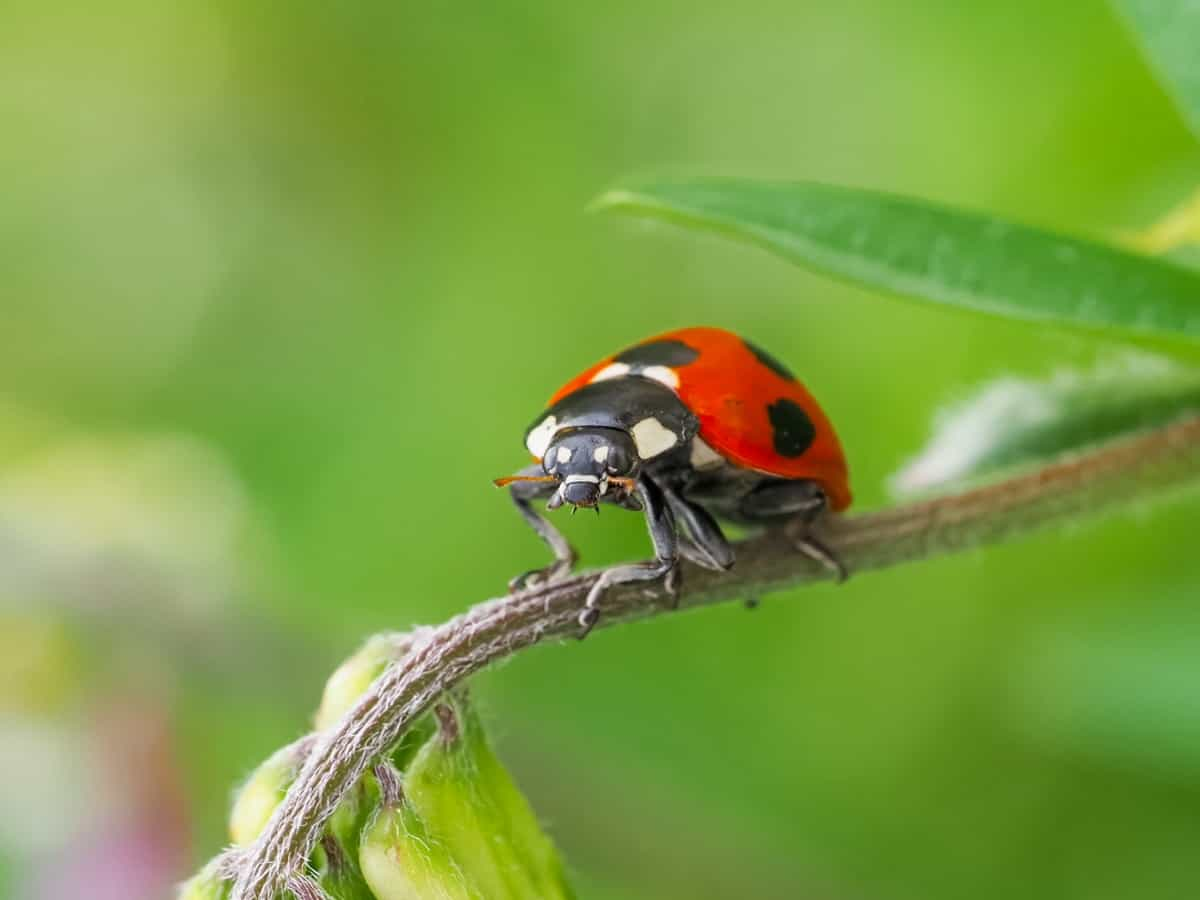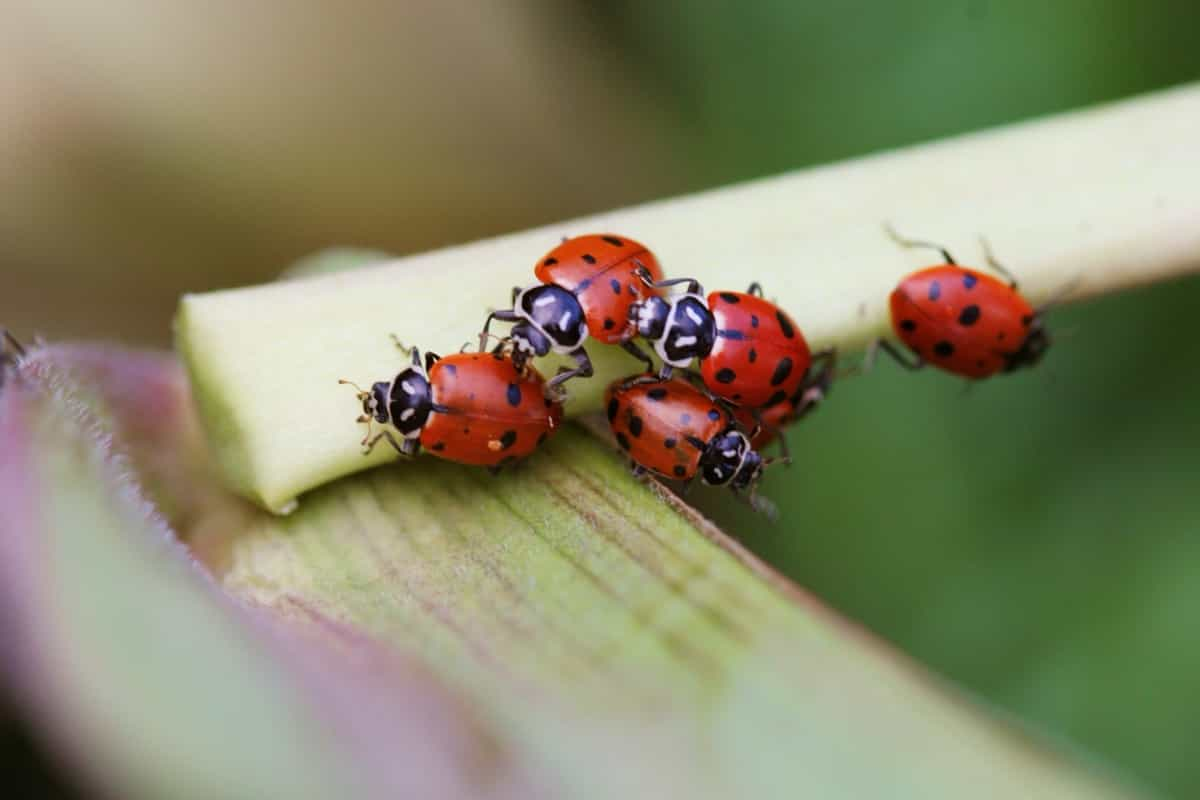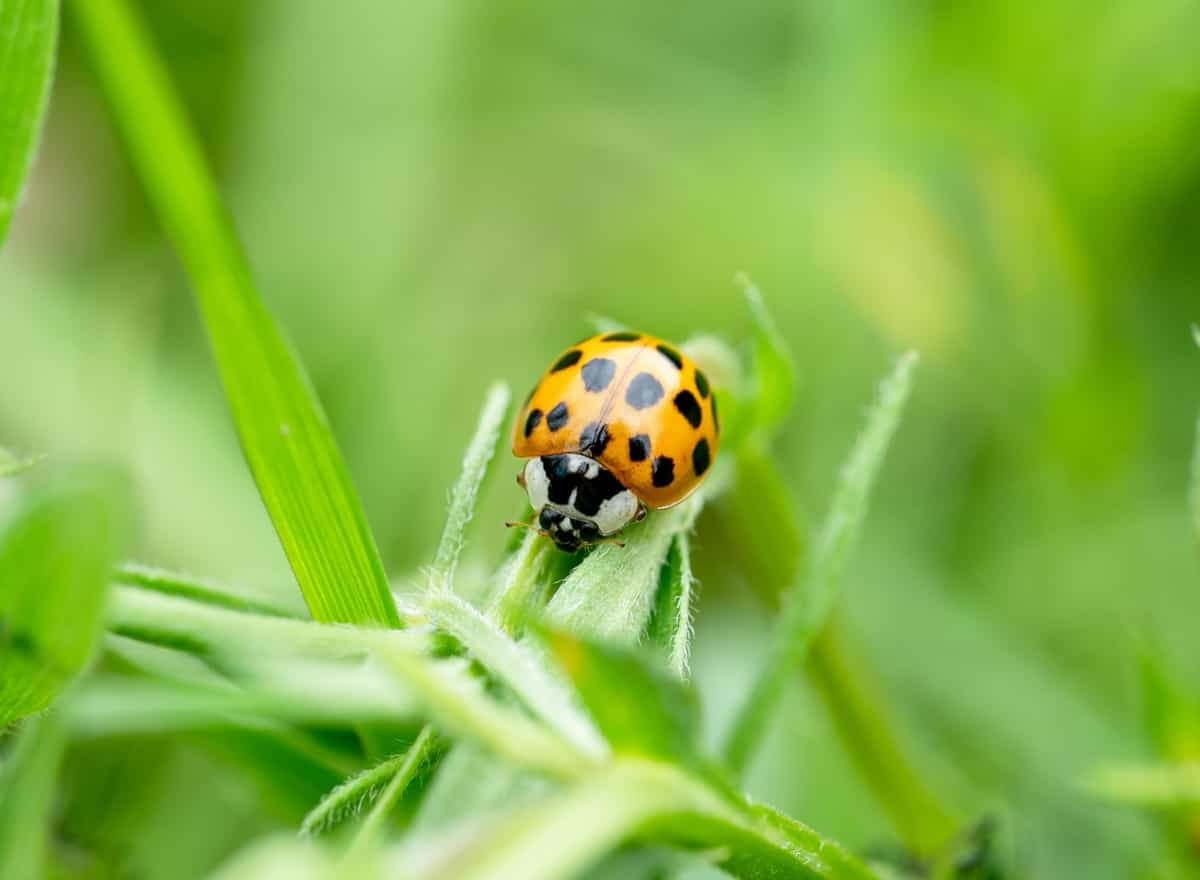Beneficial insects are natural parasites that target pests that harm crops and plants. They help reduce the need for harmful pesticides while promoting sustainable agriculture practices. These beneficial insects work together to create a harmonious ecosystem where pest populations stay under control naturally.

Ladybugs: Voracious Predators of Aphids and Other Pests
Ladybugs, also known as lady beetles, are not your average garden visitors. These tiny creatures might look cute with their vibrant colors and small size, but with their insatiable appetite for soft-bodied pests like aphids, mealybugs, and scale insects, ladybugs play a major role in keeping pest populations in check. They can devour hundreds of aphids in a single day, making them valuable allies in natural pest control. Ladybugs also help maintain balance in ecosystems by preventing pest outbreaks that could otherwise devastate crops and plants.
Parasitic Wasps: Tiny Guardians of Crop Health
Parasitic wasps may be small in size, but they play a significant role as guardians of crop health. These tiny insects are natural enemies of many agricultural pests, making them valuable allies in pest management strategies. The main type of parasitic wasp lays its eggs inside the bodies of pest insects, ultimately leading to their demise. This method not only helps control pest populations but also reduces the need for chemical pesticides that can harm the environment.
By targeting specific pests like caterpillars and aphids, parasitic wasps help maintain a balance in agricultural ecosystems. Their ability to seek out and destroy these harmful insects makes them indispensable assets for farmers looking to reduce crop damage naturally.
Lacewings: Delicate But Effective Predators in Pest Management
Lacewings, with their delicate appearance and graceful wings, are not to be underestimated in the world of pest management. These insects may seem fragile, but they are fierce predators when it comes to controlling pests in agricultural settings. Their efficient hunting skills make them valuable allies in natural pest control strategies.
Lacewings play a crucial role in maintaining ecological balance by keeping pest populations in check without the need for harmful chemicals or pesticides. Farmers and gardeners alike appreciate these tiny yet mighty creatures for their contribution to sustainable agriculture practices.
In case you missed it: Systemic Insecticides for Aphid Control: A Comprehensive Guide

Hoverflies: Pollinators and Predators of Aphids and Mites
Hoverflies, with their striking yellow and black striped bodies, are not your average garden visitors. These buzzing insects play a dual role in the ecosystem: they are both pollinators and predators. Hoverflies flit from flower to flower, sipping nectar and inadvertently transferring pollen as they go. This makes them valuable allies in plant reproduction.
Hoverfly larvae are voracious predators of aphids and mites. These tiny larvae have a big appetite for these pesky pests that can wreak havoc on crops. By keeping populations of aphids and mites in check, hoverflies help maintain a healthy balance in the garden without the need for harmful pesticides.
Predatory Mites: Natural Enemies of Plant-Feeding Mites
These tiny warriors may be small in size, but their impact on controlling plant-feeding mites is immense. With a voracious appetite for their prey, predatory mites are nature’s way of keeping these crop-damaging pests in check. These beneficial insects stealthily patrol the leaves and stems of plants, seeking out and devouring harmful mites that threaten agricultural yields. By incorporating these natural enemies into integrated pest management strategies, farmers can reduce reliance on synthetic chemicals while promoting a more sustainable approach to agriculture.
Ground Beetles: Soil-Dwelling Predators Targeting Soil Pests
Ground beetles may not be the most glamorous insects, but they play a crucial role in pest management. These soil-dwelling predators are like tiny ninjas silently hunting down soil pests that can wreak havoc on crops. With their sleek bodies and fast movements, ground beetles are efficient at keeping populations of harmful insects in check.
Ground beetles work tirelessly beneath the surface, targeting larvae of pests like caterpillars and maggots before they have a chance to cause damage to plants. By preying on these underground threats, ground beetles help maintain a healthy balance in agricultural ecosystems.
Praying Mantises: Stealthy Hunters in Agricultural Ecosystems
Praying mantises, with their unique appearance and stealthy hunting skills, are valuable assets in agricultural ecosystems. These fascinating insects blend seamlessly into their surroundings, patiently waiting to pounce on unsuspecting prey. Their sharp vision and lightning-fast reflexes make them efficient hunters of various pests that threaten crops. With a voracious appetite for insects like caterpillars, beetles, and grasshoppers, praying mantises help maintain the delicate balance of nature in farms and gardens.
In case you missed it: Management of Cricket Insects: Controlling Cricket Pests in the Garden

By preying on these pests, they assist farmers in reducing the need for chemical pesticides that can harm beneficial organisms. The agile movements of praying mantises as they stalk their prey demonstrate nature’s intricate web of predator-prey relationships. Farmers who welcome these graceful predators onto their land witness firsthand the benefits of integrating natural pest control methods into their agricultural practices.
Beneficial Nematodes: Soil Microorganisms Targeting Pest Larvae
Beneficial nematodes are like the secret agents of the soil, stealthily targeting pest larvae that threaten plant health. These microscopic organisms may be small in size, but their impact on pest management is mighty. As they move through the soil, they seek out and destroy pests like caterpillars and grubs without harming beneficial insects or plants.
Unlike chemical pesticides, beneficial nematodes work naturally to keep pest populations in check. They are a sustainable and eco-friendly solution for farmers looking to reduce reliance on synthetic chemicals while maintaining healthy crops.
Integrated Pest Management Strategies Utilizing Beneficial Insects
IPM is a sustainable approach that effectively manages pest populations by combining beneficial insects with other control methods. By incorporating natural enemies like ladybugs, parasitic wasps, and lacewings into agricultural practices, farmers can reduce their reliance on chemical pesticides. These beneficial insects help maintain a balance in the ecosystem by preying on harmful pests, thus naturally minimizing crop damage.
In case you missed it: Ultimate Guide for Applying Acaricide Insecticides for Tick Control

Ground beetles are valuable allies in soil management as they target soil-dwelling pests like cutworms and caterpillars. Praying mantises are stealthy hunters that feed on several insect species, making them efficient biological control agents. These creatures play a major role in maintaining ecological balance and keeping pests in check. Beneficial insects are nature’s pest control agents, working tirelessly behind the scenes to keep our agricultural ecosystems healthy and thriving.
- Beneficial Insects in Pest Management
- Natural Solutions for Pest Control in Flower Gardens
- Types of Fungicides Used in Agriculture
- Common Issues in the Fruit Development Stage of Pomegranate Farming
- Fruit Development Issues in Papaya: Easy Solutions and Treatment
- Soil-Borne Diseases and How to Protect Your Plants
- Practices to Prevent Disease Spread in the Garden
- From Wilted to Thriving: How to Treat Root Rot Naturally in Houseplants
- Natural Remedies to Cure Brown Spots on Fig Tree Leaves